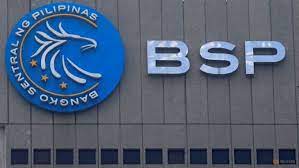Introduction
China, the world’s second-largest economy, has been closely watched by economists and policymakers worldwide. Recent data reveals both positive and concerning aspects of its economic recovery. Consumer prices in China have returned to positive territory in August, while factory-gate price declines have slowed down. These developments suggest easing deflation pressures and signs of economic stabilization. However, analysts emphasize the necessity for further policy support to bolster consumer demand, especially with a slowing labor market recovery and uncertain household income expectations.
Positive Signs: Inflation and Factory-Gate Prices
China’s consumer prices, as measured by the Consumer Price Index (CPI), have shown a return to positive territory in August. This shift indicates that deflationary pressures, which had plagued the economy, are beginning to ease. The CPI measures the average change over time in the prices paid by urban consumers for a basket of consumer goods and services, providing a crucial insight into the cost of living for Chinese households.
Additionally, factory-gate prices, represented by the Producer Price Index (PPI), have displayed a slowing decline. The PPI measures the change in the prices received by domestic producers for their goods and services. The deceleration in PPI declines is a positive indicator for businesses as it can help improve profit margins, potentially leading to increased investment and job creation.
Challenges Ahead: Slowing Labor Market Recovery
While the positive trends in inflation and factory-gate prices are encouraging, China’s labor market is facing challenges. The recovery in employment appears to be slowing down, posing a potential roadblock to sustained economic growth. A robust labor market is essential for boosting consumer spending, which is a vital driver of economic activity.
Analysts are closely monitoring the employment situation, as it has a direct impact on household incomes and, consequently, consumer demand. To address this challenge, policymakers may need to implement targeted measures to stimulate job creation and support those who have been disproportionately affected by the economic fallout of the pandemic.
Uncertain Income Expectations
Another significant concern on the horizon is the uncertainty surrounding household income expectations. Consumer confidence relies heavily on people’s perceptions of their financial well-being and future income prospects. In a time of economic uncertainty, individuals may become cautious with their spending, leading to decreased consumer demand.
Policymakers must work to provide clarity and stability to income expectations. This could involve initiatives aimed at bolstering wage growth, providing financial assistance to struggling households, or offering incentives for businesses to invest in their workforce.
The Role of Policy Support
In light of these challenges, analysts and experts are increasingly calling for more substantial policy support to safeguard China’s economic recovery. While the government has implemented a range of measures to stimulate economic activity, further targeted interventions may be necessary to address specific pain points.
Keyword: Economic Recovery in China
Policy Measures to Consider:
- Job Creation Initiatives: Implementing programs to encourage businesses to hire and invest in workforce development can help revitalize the labor market.
- Income Support: Providing financial assistance to households in need can alleviate income uncertainties and boost consumer spending.
- Consumer Incentives: Introducing incentives such as tax breaks or subsidies for certain consumer purchases can stimulate demand for goods and services.
- Investment in Technology: Promoting technological advancements and innovation can create new job opportunities and drive economic growth.
- Fiscal and Monetary Measures: Coordinating fiscal and monetary policies to ensure they are supportive of overall economic objectives.
- Targeted Industry Support: Identifying and providing support to industries that have been particularly hard-hit by the pandemic can aid in their recovery and protect jobs.
Conclusion
China’s recent economic data reflects a mixed picture, with positive signs of inflation returning and factory-gate price declines slowing. However, the challenges of a slowing labor market recovery and uncertain income expectations underscore the need for continued policy support. Analysts emphasize the importance of targeted measures to bolster job creation, support household incomes, and stimulate consumer demand. As China navigates the complexities of its economic recovery, proactive and well-calibrated policy interventions will play a crucial role in ensuring stability and sustained growth.










